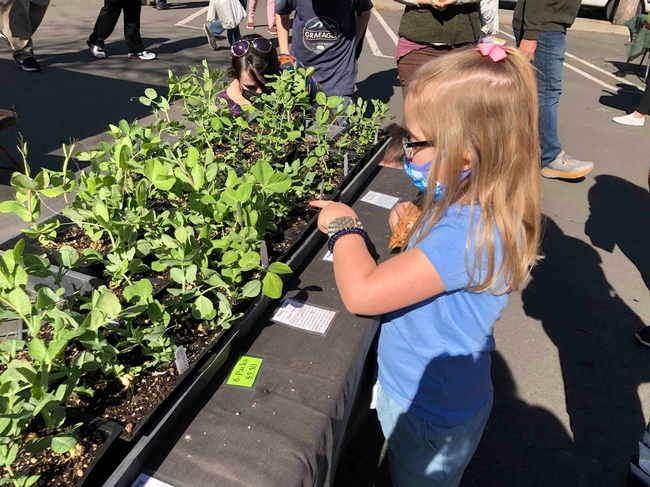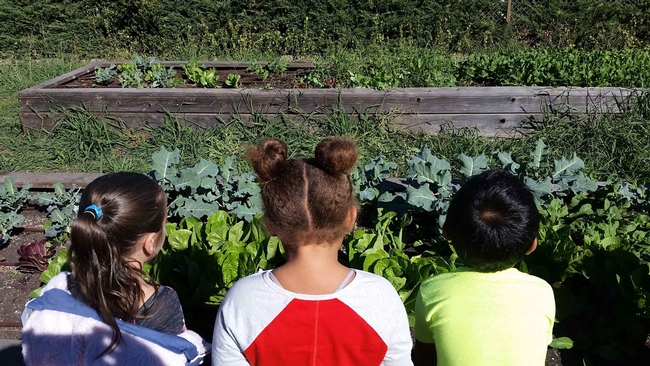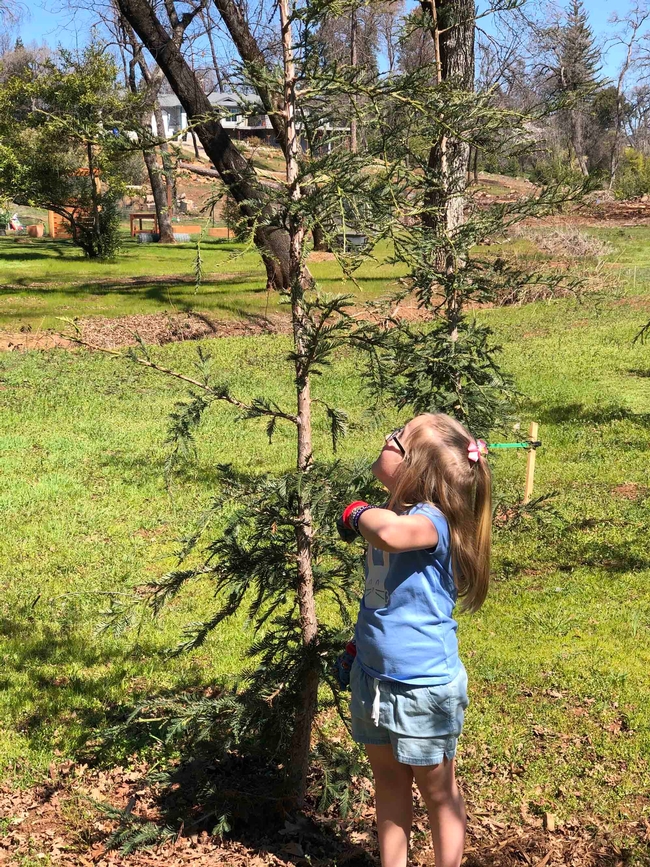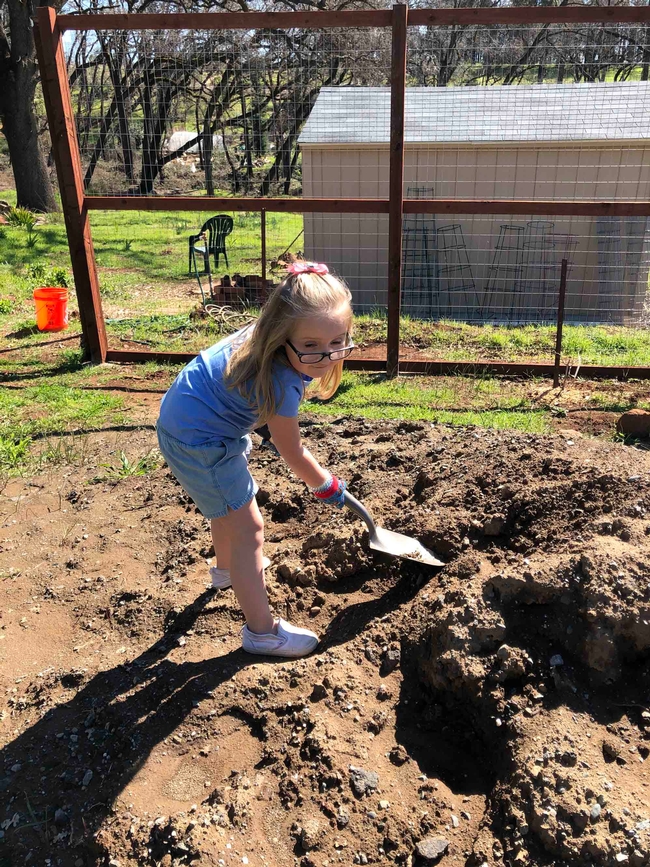There are many benefits in sharing a love for gardening with a child. Gardening is an enjoyable and healthy way to connect with children, whether they're your own, a friend's, or a neighbor's. Including children in the garden helps them develop skills they can practice for the rest of their lives. And gardening promotes mental and physical health.

Gardening teaches patience. Children live in the now, but life is a blend of immediate and delayed gratification. Waiting for a seed to germinate or a flower to open forces a child to slow down and focus on the process of its development. This is called patience practice. Learning to be patient is an essential element of future success and may also help children cope with stressful situations. Practicing patience teaches children to calm down and relax. When calm and relaxed, they are better prepared to control their impulses and emotions. This promotes good mental health.

Working outdoors in the garden with children encourages brain health. Intellectual skills like remembering, analyzing, and predicting outcomes are practiced in the garden. Learning the differences among various plants and the different parts of each plant (e.g. leaf, stem, root, flower, seed) facilitates cognitive development. The garden is a great place for kids to ask questions and explore outcomes.
Anyone who has spent time working in a garden knows that gardening is a physical activity. Turning dirt with a trowel or shovel, raking leaves, even just walking around the garden exercise upper and lower body muscles. Young children fine-tune motor skills. All children expend calories which may be instrumental in preventing obesity and other health issues as they grow into young adults. The food children harvest is full of vitamins, minerals, and phytonutrients, building strong bodies and boosting brain development. According to an article published in Harvard Medical School's HEALTHbeat titled “Foods Linked to Better Brainpower” (May 2017; updated November 16, 2018),green leafy vegetables and berries are effective brain foods. They're also not difficult to grow in containers or raised beds. Eating what they've planted helps children develop healthy eating habits. Who can resist nibbling on something we've grown ourselves?

Dirt may also strengthen a child's overall health and immunity. In medicine, the “hygiene hypothesis” theorizes that playing in dirt and being exposed to germs is actually a good thing. This hypothesis contends that the over-use of hand sanitizers, antibiotic soaps, and cleansers increases a child's susceptibility to autoimmune disorders, asthma, and allergies simply because children's developing immune systems are being suppressed. In other words, getting dirty may benefit overall health, as well as physical well-being.

Gardening also teaches mindfulness. It encourages children to focus on their senses. In the garden, children are engaged with multiple sounds, smells, and sights. Garden work can calm and center children as they pay attention to the smell, taste, feel, or visual characteristics of a particular plant. Activities that help children focus on their senses encourage self-awareness and strengthen qualities such as tolerance, empathy, kindness, and appreciation. Becoming mindful of their gardens and the physical world in general encourages children to become environment-conscious “green thinkers.”

- Mindful eating. Snack on something grown in the vegetable or flower garden. We tend to forget that many flowers such as dandelion (also known as a stubborn weed), nasturtium, pansy, and chamomile are edible. Snow peas, spinach, and lettuce are ready for the picking now. What does it look like? Talk about how it smells. Close your eyes and chew slowly. Discuss the taste. Bitter? Sweet?
- Pressed flowers. Gather fresh flowers. Place each flower (or, for larger flowers, the separated petals) between two pieces of parchment (or waxed) paper. Put between pages of a heavy book and add more weight with other books on top. Wait two to three days for flowers to dry. It's fun to place the dried flowers in a picture frame to display in the house. The same method works beautifully for leaves and is especially effective with fall foliage.
- Butterfly feeder. A butterfly feeder is simple to make with a clean tin can and some twine. Poke holes in the tin can and thread the twine through the holes so you can hang the can from a tree branch. Add a bit of sponge soaked in sugar water and then fill the can with colorful stemmed flowers (like filling a vase with flowers). Butterflies are attracted to bright colors. Soon they'll be visiting your feeder.
- Flower/Vegetable/Seed journal. Start with a blank journal. On the left side of each set of pages, have your young gardener paste an envelope for the seed package. Place the seed packet inside the envelope. On the right side, your gardener will write the date the seeds are planted and illustrate the different stages of growth of the seeds.
- Painted pots. Let your young gardener paint his or her containers.
- Pizza/Salsa gardens. These are great to plant in containers. What herbs are needed for pizza? Peppers and herbs are perfect container plantings.
- Plant a rainbow. You'll only need a small plot (or large container) to plant flowers and vegetables that mimic the hues of a rainbow. Think flowers and vegetables that are pink, orange, green (mint is great here), and blue/purple.
- Plant a name garden. Take a flower box or a container large enough for your young gardener's name. Fill the container with potting soil. With a pencil have your child write their name in the soil. Sprinkle alyssum seeds in the marks. Gently sprinkle soil over the marks. Water and wait. Your child's name will appear as the seeds sprout.
UC Master Gardeners of Butte County are part of the University of California Cooperative Extension (UCCE) system. To learn more about us and our upcoming events, and for help with gardening in our area, visit our website. If you have a gardening question or problem, email the Hotline at mgbutte@ucanr.edu (preferred) or call (530) 538-7201.